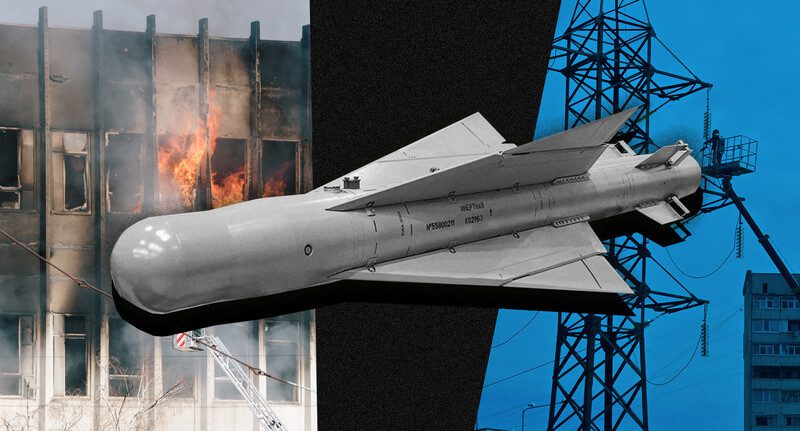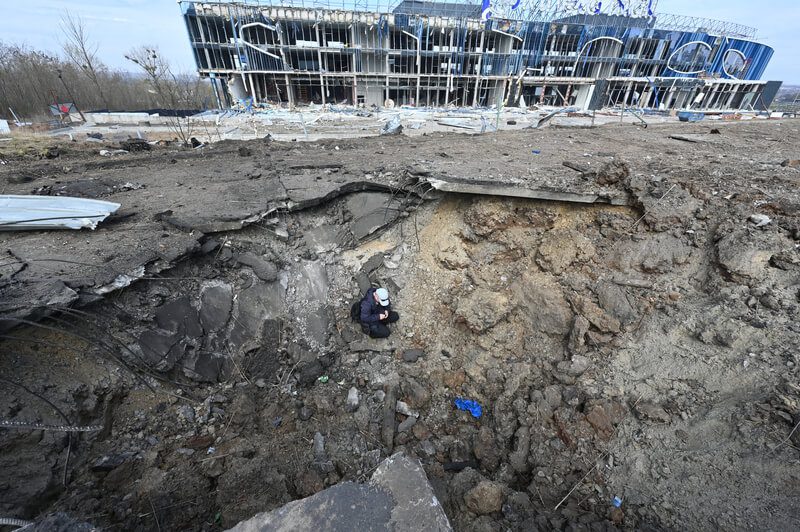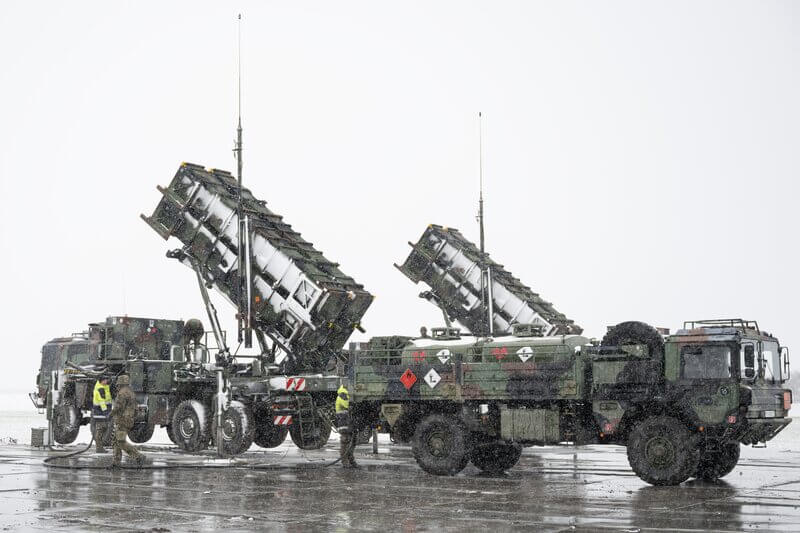Russia Throws Bombs at Kharkiv and Sumy: Is It Possible to Counteract Them, and What Does Impotence Lead To?

The missile terror of Kharkiv, as well as other Ukrainian cities, has not stopped throughout the full-scale war. The proximity to the border with Russia (about 30 kilometers) allows the occupiers to fire not only cruise missiles and attack drones but also ballistic missiles, which are almost impossible to intercept. But in March-April 2024, Russia intensified attacks on Kharkiv’s energy and civilian infrastructure, in particular, by attacking with guided aerial bombs (GAB). All of this is happening amid talk of possible Russian preparations for a second offensive on the city.
Zaborona’s editor Svitlana Hudkova discussed with experts whether Ukraine has the ability to defend its cities and counter air strikes.
GABs in Kharkiv
Kharkiv, a city of one million people, is constantly suffering from attacks by S-300 and S-400 anti-aircraft guided missiles and Iskander ballistic missiles. These weapons have also hit the people of Kyiv. However, thanks to the Patriot air defense system protecting the sky over the capital, air defense forces are successfully working on targets.
Unfortunately, Ukraine has very few SAMs (surface-to-air missile systems) that can hit ballistic targets. The exact number is unknown, but presumably there are only two or three at disposal of the Ukrainian Armed forces. The absence of such a system in Kharkiv is explained by the fact that the city is very close to the enemy border. Therefore, upon deployment, it would immediately become the number one target of the Russians. However, recent events are forcing the authorities to look for options to protect the city.
On March 27, 2024, for the first time since 2022, Kharkiv was hit by guided aerial bombs. There were two cases in total: first, a public school was hit, and then the bomb fell right in the middle of residential buildings. The strike killed a man and injured 19 others.
As it became known later, Russia used new aviation munitions — UMPB D-30SN (UMPB stands for Versatile Intermediate Gliding Munition). Defence Express believes that the product is based on the FAB-250 air-dropped bomb, which was equipped with a module with wings and steering surfaces, allowing the bomb to glide to the target and adjust the trajectory based on data from the navigation unit. They also added an engine to increase the range of the bomb to 90 kilometers, which allowed the Russians to strike Kharkiv without the risk of bringing their aircraft into the Ukrainian air defense zone. After that, Russia continued its attacks on the city with these gliding munitions.
The main problem is that Russia has a large stockpile of these bombs. We are talking about:
- UMPB D-30SN;
- guiding bombs such as the UPAB-500V or UPAB-1000V;
- high explosive FAB-250, FAB-500, FAB-1500;
- correctable air bombs KAB-500Kr or KAB-1500, which have recently been dropped at the city of Sumy and the Sumy region.
And Russia has learned to modernize its munitions. Even old Soviet FABs (extremely powerful but not at all precise) have been fitted with wings and GPS, so that the bomb can fly farther and hit targets more accurately. If earlier these shells caused significant problems at the front, now they are being used against civilians in Kharkiv and Sumy. And their destructive power has been well known since the beginning of the full-scale war, when Russians actively dropped these bombs on houses in Mariupol or Borodianka.

A utility worker sits in a crater after a missile strike in Kharkiv, April 6, 2024, amid Russia’s invasion of Ukraine. Photo: SERGEY BOBOK/AFP via Getty Images
Why Russia is shelling Kharkiv
The increase in attacks by the GABs on a particular frontline city has already become a certain harbinger that the Russians are going to capture it. By throwing bombs, the occupiers are actually wiping the selected settlement off the map, making it impossible for the Ukrainian Defense Forces to hold positions there. At the same time, there have been recent reports that Russia is allegedly preparing for a new offensive on Kharkiv: Zaborona also explained why this is currently impossible.
The other day, The Economist, citing military sources in Kyiv, wrote that by intensifying the shelling of Kharkiv, the Kremlin decided to turn it into a gray zone unfit for civilian habitation.

Military observer Denys Popovych agrees with this thesis partly. But while others recall Putin’s recent remarks about the need to create a so-called “sanitary zone” in Ukraine to protect Russian territory from shelling (hello, Belgorod), the expert sees a different goal.
“The destruction of Kharkiv, as well as frontline and border settlements, fits into the order given by Vladimir Putin. Information about this order has recently been circulating in the public space. It is to destroy as many Ukrainian cities as he can get his hands on. It is necessary to make them uninhabitable, create panic, and force the population to flee in order to cause social unrest and undermine the rear. Russia is trying to create conditions for the Ukrainian government to negotiate with the Kremlin under scenarios favorable to it,” Popovych said.
So Kharkiv alone may not be enough. As you know, bombs are also used to strike Sumy. The next one may be the border city of Chernihiv or other frontline cities that are easy targets for Russian bombing attacks. And how to protect people needs to be decided now.

Bundeswehr soldiers work near two trailers with launchers for Patriot guided missiles in southeastern Poland. Photo: Sebastian Kahnert/picture alliance via Getty Images
How to deal with Russian GABs
Reacting to the shelling, the Ukrainian authorities emphasize the need to strengthen Kharkiv’s air defense, in particular by obtaining additional Patriot air defense systems or their analogs. However, experts doubt that this will strengthen the city’s defense.
“Due to its proximity to the border, it is difficult to cover Kharkiv with air defense systems, as they may be in the range of enemy artillery systems. Patriot is not a panacea here, although air defense systems are needed to combat carriers of GABs,” Popovych said.
In addition, the cost and shortage of Patriot missiles also make their use against GABs unjustified.
So, one of the options to counter guided bombs is to hit the aircraft from which they are dropped. In early 2024, the Ukrainian Air Force went on a real hunt for Russian aircraft. In February alone, 13 aircraft were destroyed, mostly Su-34s and Su-35s — the carriers of the bombs. It is not officially known what exactly was used to shoot them down, but military experts mostly agreed on Patriots, because they were the only weapons available that matched the characteristics.
But as already mentioned, such systems are becoming a very desirable target for the Russians. On March 9, American Forbes reported that the Russians allegedly hit two Patriot launchers near Pokrovsk, Donetsk region. There has been no official confirmation from Ukraine, but it is noteworthy that the shooting down of Russia’s aircraft has since stopped.
F-16 fighters equipped with AIM-120 AMRAAM missiles will also be able to destroy enemy aircraft. Depending on the modification, they can shoot down air targets at a distance of up to 180 km. This is enough to force Russian aircraft away from Ukraine’s borders.
The second option is to strike at the locations of the aircraft. And, judging by the latest news, the Ukrainian special services have already begun to implement this plan. On the night of April 5, Ukrainian drones struck enemy airfields in Yeysk, Morzovsk, and Engels. These airfields are home to carrier aircraft for the GABs.
It can also be noted that many of the airfields where the Su fighters are based are located within the range of the Storm Shadow/Scalp missiles, as well as the German equivalent Taurus, supply of which is highly anticipated in Ukraine. Therefore, these missiles could also help.






